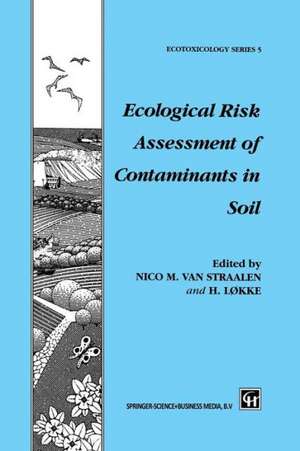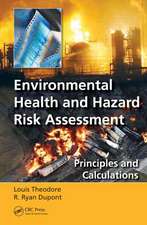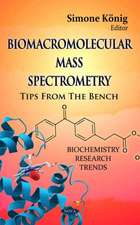Ecological Risk Assessment of Contaminants in Soil
Editat de N.M. Van Straalen, Hans Løkkeen Limba Engleză Paperback – 31 oct 2012
| Toate formatele și edițiile | Preț | Express |
|---|---|---|
| Paperback (1) | 947.35 lei 6-8 săpt. | |
| Springer Us – 31 oct 2012 | 947.35 lei 6-8 săpt. | |
| Hardback (1) | 949.55 lei 6-8 săpt. | |
| Springer Us – 31 mai 1997 | 949.55 lei 6-8 săpt. |
Preț: 947.35 lei
Preț vechi: 1155.30 lei
-18% Nou
Puncte Express: 1421
Preț estimativ în valută:
181.29€ • 189.51$ • 153.20£
181.29€ • 189.51$ • 153.20£
Carte tipărită la comandă
Livrare economică 06-20 martie
Preluare comenzi: 021 569.72.76
Specificații
ISBN-13: 9781461379225
ISBN-10: 1461379229
Pagini: 356
Ilustrații: XVII, 333 p.
Dimensiuni: 155 x 235 x 19 mm
Greutate: 0.5 kg
Ediția:Softcover reprint of the original 1st ed. 1997
Editura: Springer Us
Colecția Springer
Locul publicării:New York, NY, United States
ISBN-10: 1461379229
Pagini: 356
Ilustrații: XVII, 333 p.
Dimensiuni: 155 x 235 x 19 mm
Greutate: 0.5 kg
Ediția:Softcover reprint of the original 1st ed. 1997
Editura: Springer Us
Colecția Springer
Locul publicării:New York, NY, United States
Public țintă
ResearchCuprins
1 Ecological approaches in soil ecotoxicology.- One Extrapolation From Experiments.- 2 Scientific basis for extrapolating results from soil ecotoxicity tests to field conditions and the use of bioassays.- 3 Is it possible to develop microbial test systems to evaluate pollution effects on soil nutrient cycling?.- Two Populations in Soil.- 4 Ecotoxicology, biodiversity and the species concept with special reference to springtails (Insecta: Collembola).- 5 Effects of toxicants on population and community parameters in field conditions, and their potential use in the validation of risk assessment methods.- Three The Soil as an Ecosystem.- 6 Linking structure and function in marine sedimentary and terrestrial soil ecosystems: implications for extrapolation from the laboratory to the field.- 7 A food-web approach to assess the effects of disturbance on ecosystem structure, function and stability.- Four The Spatial Component of Soil Communities.- 8 Scale dependency in the ecological risks posed by pollutants: is there a role for ecological theory in risk assessment?.- 9 Dispersal, heterogeneity, and resistance: challenging soil quality assessment.- Five The Role of Ecological Modelling.- 10 The use of models in ecological risk assessment.- 11 A physiologically driven mathematical simulation model as a tool for extension of results from laboratory tests to ecosystem effects.- Six Ecological Approaches: Case Studies.- 12 Extrapolation of laboratory toxicity results to the field: a case study using the OECD artificial soil earthworm toxicity test.- 13 Life-table study with the springtail Folsomia candida (Willem) exposed to cadmium, chlorpyrifos and triphenyltin hydroxide.- 14 Reaction norms for life-history traits as the basis for the evaluation of critical effect levels of toxicants.- 15 Estimating fitness costs of pollution in iteroparous invertebrates.- Seven Recommendations.- 16 Soil ecotoxicology: still new ways to explore or just paving the road?.
Recenzii
`This text will be a valuable reference for those in this field of research, and its sponsors.'
Biologist
Biologist











